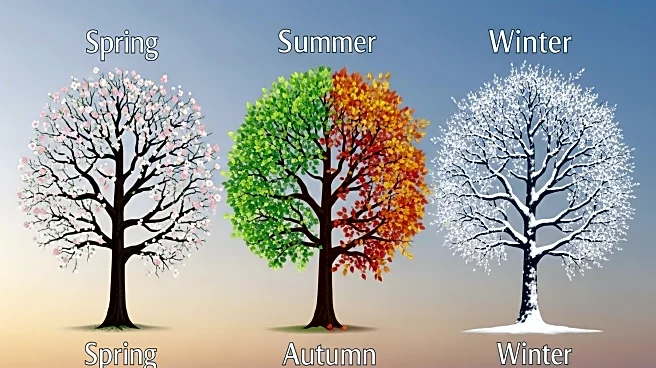What's Happening?
A new study published in Nature has used satellite data to reveal that Earth's seasonal cycles are not as synchronized as previously thought. The research highlights 'hotspots' of seasonal asynchrony, where the timing of seasonal cycles varies significantly between nearby locations. This phenomenon is particularly evident in Mediterranean climate regions and tropical mountains. The study suggests that these differences in timing can have ecological, evolutionary, and economic consequences, affecting biodiversity and agricultural practices.
Why It's Important?
The findings challenge traditional assumptions about seasonal cycles and highlight the complexity of Earth's ecosystems. Understanding these patterns is crucial for predicting the impacts of climate change on biodiversity and agriculture. The study's insights could inform conservation strategies and agricultural planning, helping to mitigate the effects of climate variability. The research also underscores the importance of satellite technology in advancing our understanding of global environmental changes.
Beyond the Headlines
The study's implications extend to evolutionary biology, as out-of-sync seasonal cycles could lead to genetic divergence and speciation. The research also highlights the potential for satellite data to enhance our understanding of ecological processes and inform policy decisions related to climate change and biodiversity conservation.











